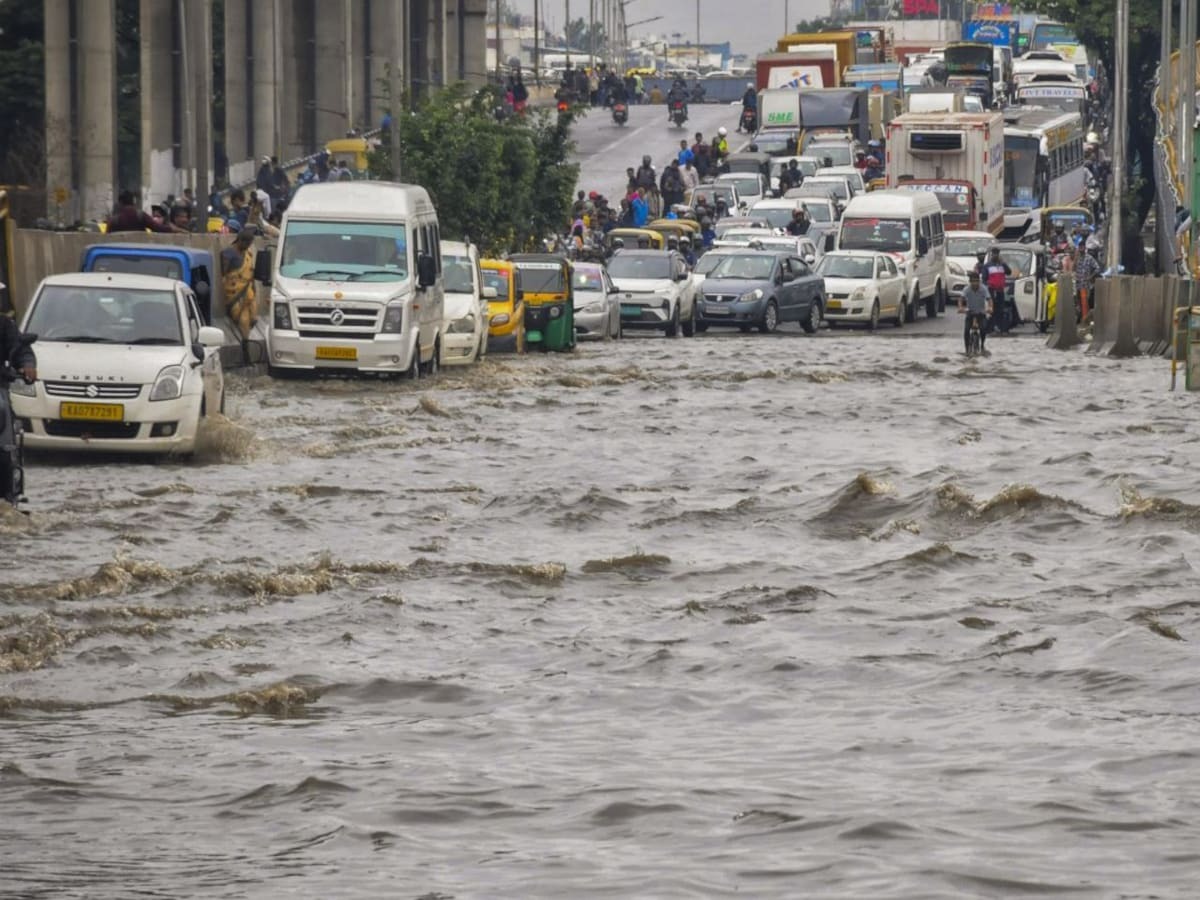Despite sitting 3,000 feet above sea level, Bengaluru continues to grapple with severe flooding every time it rains. The city, known for its thriving tech industry and pleasant climate, faces repeated waterlogging due to decades of unplanned urban development and neglected infrastructure.
The root causes of Bengaluru’s flooding
- Bengaluru’s natural drainage system, consisting of three major valley networks—Hebbal, Koramangala–Challaghatta, and Vrishabhavathi—has been severely disrupted by unchecked construction
- Lakes that once acted as reservoirs have been filled in and converted into tech parks, bus stations, and residential complexes, leaving the city vulnerable to water accumulation
- Of the 860 km stormwater drainage network, less than 60 percent has retaining walls, and only half of the identified encroachments have been cleared
Recurring chaos and civic failures
- Every monsoon, Bengaluru’s residents brace for traffic gridlocks, submerged vehicles, power outages, and even building collapses
- Rescue boats have become a common sight in low-lying areas, as civic authorities struggle to manage flood relief efforts
- The Bruhat Bengaluru Mahanagara Palike has repeatedly assured flood preparedness, yet each year, the same cycle of devastation unfolds
Government response and future plans
- The Karnataka government has allocated 2,000 crore rupees under the Karnataka Water Security and Disaster Resilience Initiative to upgrade 173.9 km of stormwater drains
- Plans include adopting scientific flood mitigation methods, clearing encroachments, and linking lakes through feeder drains
- Experts argue that Bengaluru’s flooding is not a geographical issue but a governance failure, with infrastructure projects prioritizing commercial interests over public welfare
Looking ahead
- While some flood-prone areas have seen improvements due to proactive drainage upgrades, many parts of the city remain highly vulnerable
- Sustainable urban planning and stricter enforcement of zoning laws are crucial to preventing future disasters
- Bengaluru’s ability to balance rapid urbanization with environmental resilience will determine whether the city can finally break free from its annual flooding woes
Sources: Moneycontrol, Times of India, Business Standard.
